Original URL: https://www.theregister.com/2008/11/27/tob_kitchen_computer/
Honeywell's Kitchen Computer remembered
The $62,550 machine no one bought
Posted in Bootnotes, 27th November 2008 04:52 GMT
This Old Box, Holiday Edition The holiday season has returned to Silicon Valley!
Bright and golden California summers have given way to a vivid fall landscape also bright and golden - but with a chance of rain. It's Thanksgiving in the state, and tots are already awaiting the arrival of Saint Nick, who's annual roll-out could mean a shiny iPhone if they've been good, or maybe a Zune duct-taped to a RAZR phone if they've been extremely naughty.
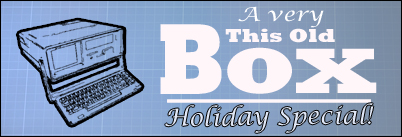
With the holiday spirit in mind, we return to the Computer History Museum in Googleton Mountain View for a very special edition of This Old Box.
Let us first ponder: We've discussed several important computers in this erratically-released column. Many of these units, along their notable triumphs, come with a fair share of faults – be it a 23-pound frame on a supposedly portable PC, or the occasional electromagnetic pulse on start-up that destroys all storage tapes in the area. You can't make lemonade without some lemons.
But none, to this reporter's knowledge, sold a total of zero units. That's because hitting the big goose egg so squarely is actually rather difficult. Everyone has a mother, after all. A computer that no fool on Earth would purchase requires machinery so decadent and impractical, so awash up in the dream that super-science will simplify our lives, that it could only arrive in a Neiman-Marcus holiday catalog.
And so we explore the Honeywell Kitchen Computer. Made exclusively for the housewife that has everything but tangible proof her husband is a clueless jackass.
Honeywell H316 Pedestal AKA "Kitchen Computer"
Released: 1969
Price: $10,600
CPU: 0.6MHz
Memory: 4KB, expandable to 16K
Display: Binary lights
Special Features: Built-in cutting board
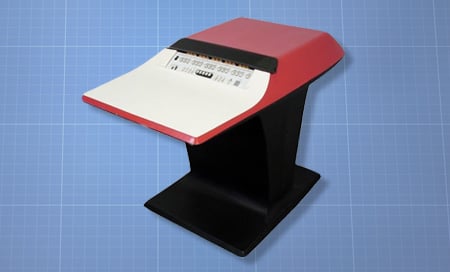
The Kitchen Computer was featured in the 1969 Neiman-Marcus holiday catalog as a cutting-edge PC made for suburban housewives to store their recipes. Not that the system performed its singular task well.
Casserole Data
Unfortunately, its "user interface" only consisted of a strip of binary front panel lights and some switches, making entry or recovery of the family's famous casserole data a monumental task of machine mastery and encryption. In fact, Neiman Marcus advertised the system as coming with a complimentary two week programming course to learn how to use it – which is something anyone could enjoy over the holidays, we're sure.
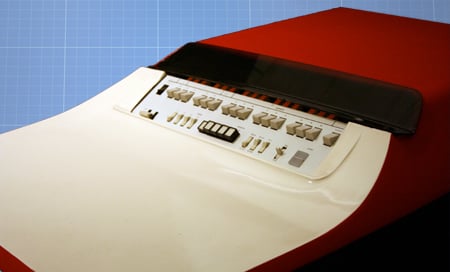
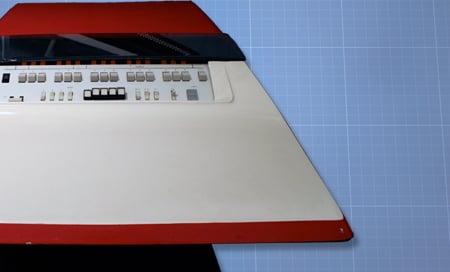
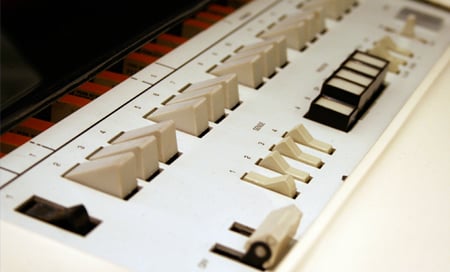
The system is a Honeywell H316 General Purpose Digital Computer, which came in a tabletop, rack-mountable, and "futuristic styling" of Kitchen Computer's pedestal design, according to an old company brochure (PDF).
Instant Holiday Promotion
Honeywell had pitched the machines for industry, mathematics, medical, scientific research, and other advanced uses – but apparently Nieman Marcus thought they could possibly have a place in the kitchen. What was billed as a "writing table" became a kitchen cutting-board and voilà -- instant holiday promotion!
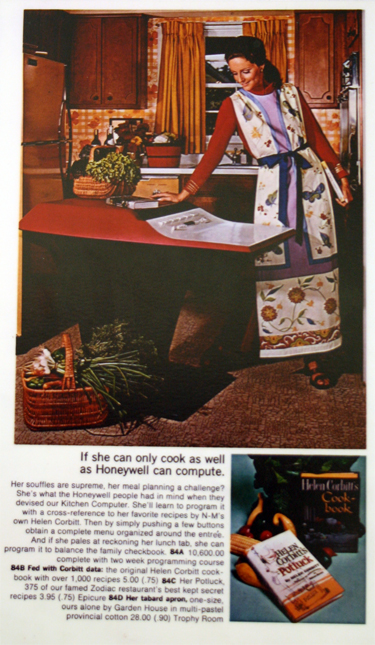
The advertisement reads:
If she can only cook as well as Honeywell can compute"Her soufflés are supreme, her meal planning a challenge? She's what the Honeywell people had in mind when they devised our Kitchen Computer. She'll learn to program it with a cross-reference to her favorite recipes by N-M's own Helen Corbitt. Then by simply pushing a few buttons obtain a complete menu organized around the entrée. And if she pales at reckoning her lunch tabs, she can program it to balance the family checkbook.
In 1952, Nieman Marcus introduced a tradition of listing extravagant gifts on its Christmas catalog. Since then, it's advertised obnoxious luxuries like a toy tiger covered in diamonds, a golden toilet seat, and a robe worn by a Chinese emperor in 1770.
Crumbs on the Keyboard
A cook wishing for the Kitchen Computer under his tree in 1969 would have to shell out $10,600 for the system. Factoring inflation, the price is equivalent to about $62,550 (£ 40,764) today. That's probably why there's no record of anyone ever buying a Kitchen Computer.
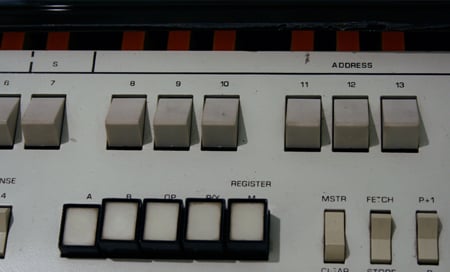
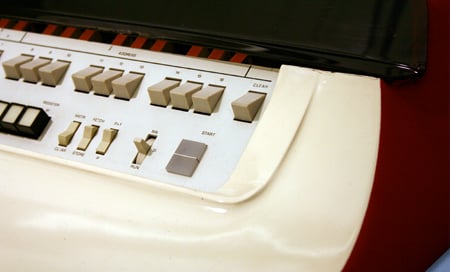
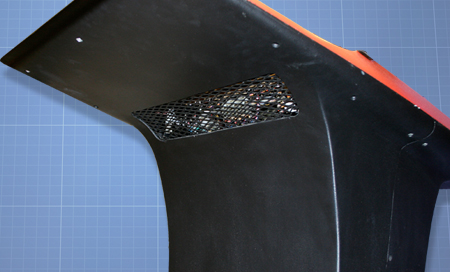
Alas, the Kitchen Computer's utter lack of popularity meant humankind would need to store its recipes in old fashion books and cue cards like a bunch of chumps until many years later. Vendors, however, have been tried fruitlessly to fit computers into the kitchen ever since with laughable and impractical results.
But as the crumbs in your keyboard are testament, food and home computing are simply meant to go together. Until that day arrives, we can only look back at Kitchen Computer and yearn for what could have been.
As usual, we give our attribution and thanks to the Computer History Museum for letting us poke around the collection. ®